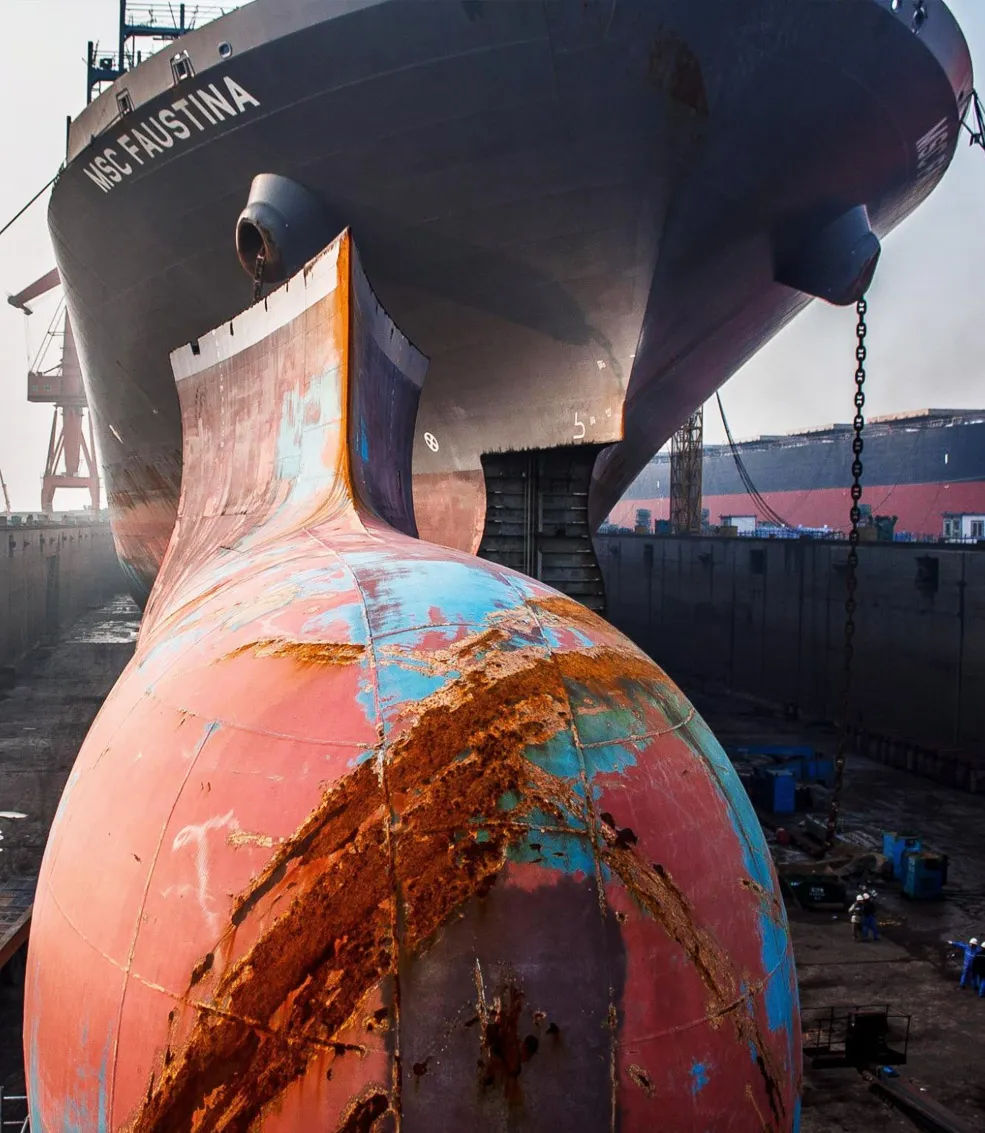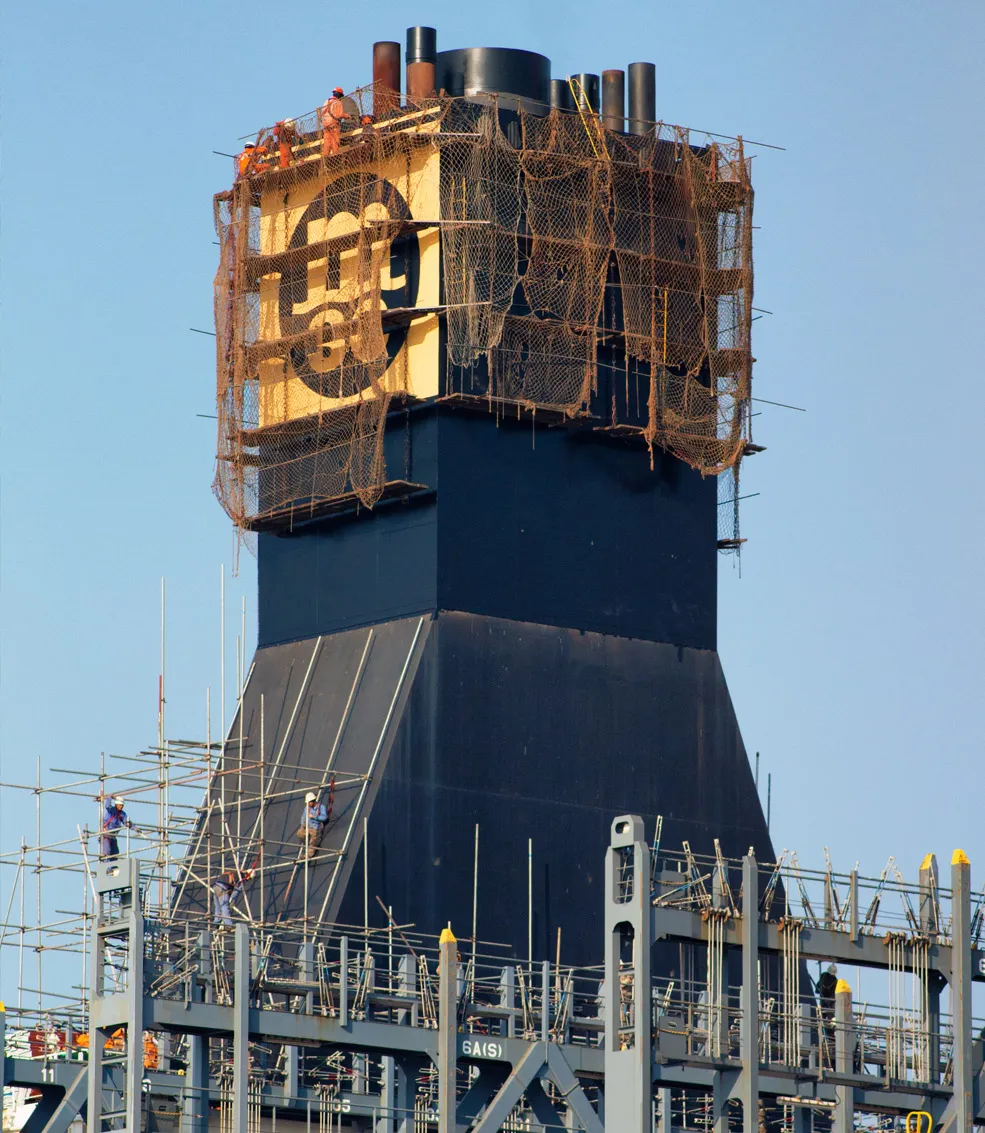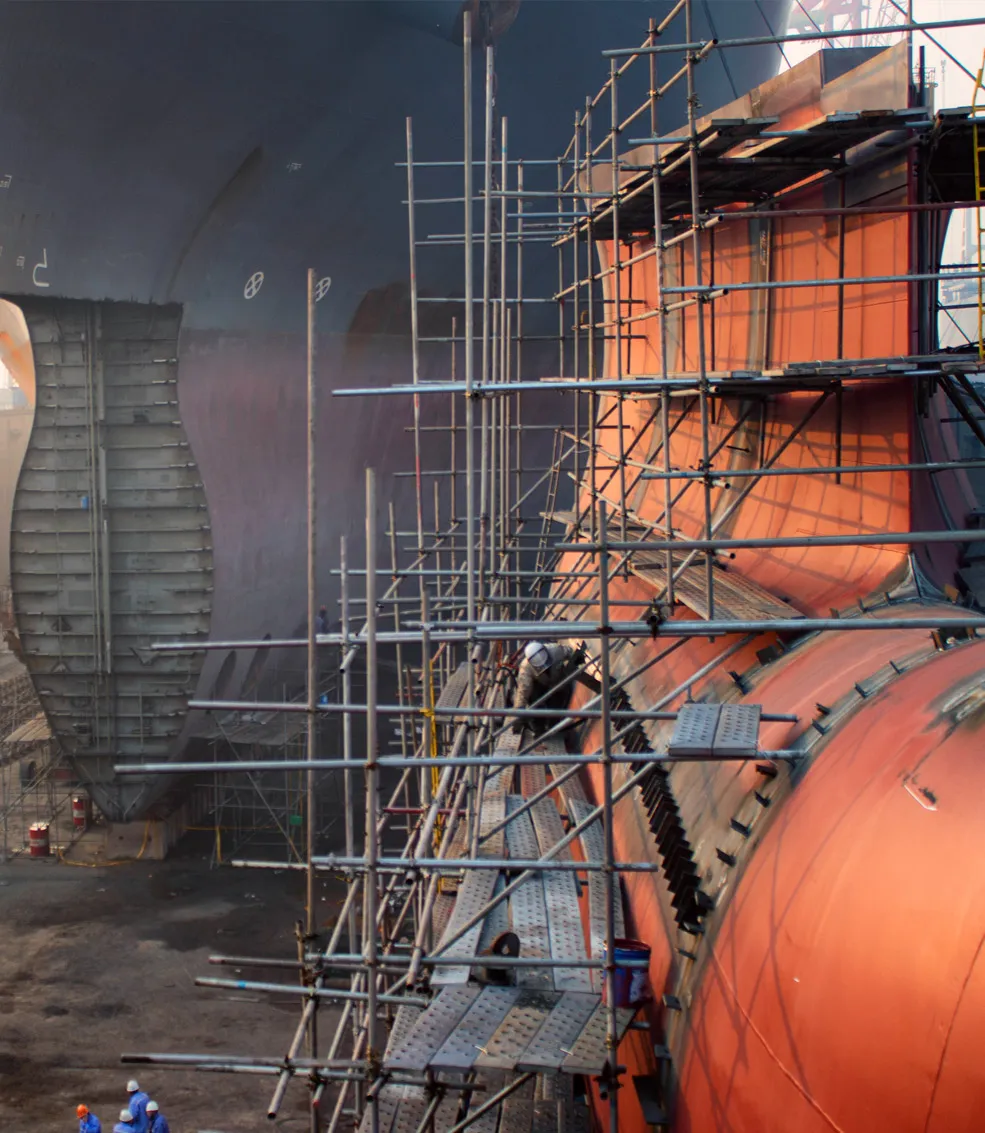The full efficiency package
The Hamburg-based shipowner Peter Döhle has modernized its four largest container ships, making numerous efficiency-enhancing modifications which have produced more than satisfactory results. DNV GL contributed its expertise to the project.
A container ship is never entirely finished: On many occasions during its life cycle, modifications have to be made to adapt it to new market conditions. The F-series of owner Peter Döhle is a good example: The 12,600 TEU ships, christened Fabiola, Filomena, Fillippa and Faustina, had been completed by Samsung in South Korea in 2010 at a time when container ships were cruising much faster than today.
A few years later, amid the shipping crisis and soaring fuel costs, “slow steaming” was a relatively easy-to-implement measure. “The ships’ original operating profile was no longer appropriate,” says Philipp Hesse, naval architect in the newbuilding department at Peter Döhle. “Therefore our performance department began discussions with the charterer, MSC, as early as 2014 to see how these vessels could be made more efficient and eco-friendly,” he adds. Since fuel costs are the biggest operational cost item for charterers, tramp and line operators are in the same boat – lower consumption improves a ship’s market value.

Different operational profile
Liaising closely, Döhle, MSC and DNV GL defined a new operational profile and derived a comprehensive package of optimization measures. Since the engine ran with less than optimal efficiency at low rotational speeds, its output was reduced from 60,000 to roughly 41,000 kW by cutting out the turbocharger.
The biggest change, however, was the bulbous bow. “We had to design a shape specifically for lower speeds and a different draught.” DNV GL reviewed and approved the designers’ proposals, which were then implemented at Chinese yards. Exchanging the bow alone reduces fuel consumption by up to 10 per cent. The stern offered potential for improvement as well: The manufacturer MMG provided a propeller cap which reduces hub vortex losses, saving an additional 2.5 per cent of fuel costs.
During the retrofitting work, the DNV GL surveyor was present at the yard to supervise activities such as pressure testing of the bulbous bow welds. In addition, the shipowner maintained constant contact with the DNV GL head office: “They were always approachable and ready to help in an unbureaucratic manner, which helped us stick to our tight schedule,” Hesse summarizes his experiences. In fact, yard times got shorter as the project went on – while the first retrofit, Fillippa, took two and a half weeks to complete in Qingdao, the remaining ships, which were modified in Dalian, were completed within two weeks. Philipp Hesse was present at the yard to supervise the work.

Increased loading capacity
Lowering the design waterline was a special challenge that likewise required close collaboration with the DNV GL experts to address the associated stability issues. Validation of the drawings by the classification society resulted in an additional requirement: All in all, around 200 reinforcements had to be welded into the ship’s double-bottom tanks and the passageway below the main deck. But all the efforts proved worthwhile, with the vessels are now able to carry more than 750 additional containers. “With 13,400 TEU we now play in a different league where we can get additional market share,” says Hesse. Since containers can be stacked in eleven rather than eight tiers in the aft section of the ship, it was necessary to elongate the funnel to prevent exhaust gases from entering the boxes. This was accomplished by simply inserting a 4.5-metre block and connecting it with the existing exhaust pipes.
The overall upgrading package not only included efficiency enhancements but also measures to increase operational flexibility. For example, in future the ships will be able to use the enlarged Panama Canal.“Not a problem as far as the ship’s dimensions are concerned,” says Hesse. But new regulations required modification of the mooring equipment on board. Chocks had to be relocated and bollards exchanged to handle stronger forces. To enhance the flexibility of the ships and ready them for the future, alternative marine power (AMP) equipment had to be retrofitted. Now the vessels are wired to utilize port-side electricity, which can be supplied via an AMP container placed on the mooring deck in the stern section.
Philipp Hesse points out that the entire package of modifications exemplifies his company’s philosophy: “Peter Döhle takes a long-term perspective on its ships and wants to make them sustainable.” It was a great challenge to implement all the modifications considered “technically, economically and ecologically appropriate” in one project, and to do so within a tight timeframe, he adds. The project was challenging for DNV GL, as well: “This goes to show how much can be optimized even on a modern container ship in a changed operating environment if you take a holistic approach,” says Dirk Lange, Key Account Manager, Business Development at DNV GL. “Our experts have supported many shipowners in retrofitting projects in the past.”

Profitable investment
Peter Döhle has profited from many of these experiences in modifications of smaller units. For example, a number of 5,500 TEU ships have received new bulbous bows. All in all, the measures implemented by the company’s performance department on its fleet of 360-metre container flagships have achieved average efficiency increases between 12 and 16 per cent. At a cost of roughly $1.2 million per vessel, fuel savings alone paid for the measures within about one year. But the next retrofit is already planned: Philipp Hesse and his team have just selected the scrubbers which will enable the four vessels to comply with the stricter IMO limits for the sulphur content in ship fuel from 2020 – another project requiring close cooperation between the owner, the charterer and the classification society. Installation of the systems, which cost $3.5 million, is scheduled for next spring. “And after that, we will aggressively address the ballast water management issue,” says Hesse. A container ship is never really finished.
Contact us


